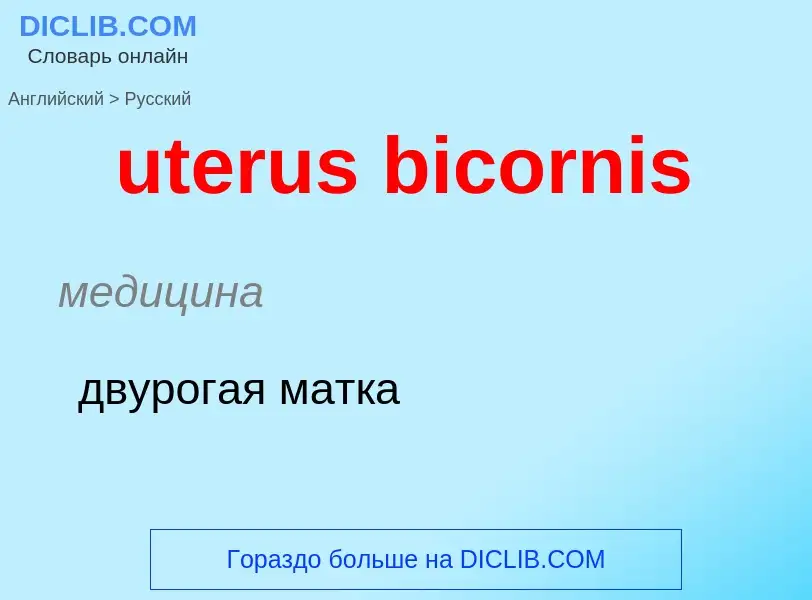Translation and analysis of words by artificial intelligence
On this page you can get a detailed analysis of a word or phrase, produced by the best artificial intelligence technology to date:
- how the word is used
- frequency of use
- it is used more often in oral or written speech
- word translation options
- usage examples (several phrases with translation)
- etymology
uterus bicornis - translation to russian
медицина
двурогая матка
[retrəu'və:t]
глагол
редкое выражение
поворачиваться обратно
возвращаться (в прежнее состояние)
[retrəu'və:tid]
общая лексика
повёрнутый или загнутый назад
прилагательное
общая лексика
повёрнутый или загнутый назад
Definition
Wikipedia

Uterine rupture is when the muscular wall of the uterus tears during pregnancy or childbirth. Symptoms, while classically including increased pain, vaginal bleeding, or a change in contractions, are not always present. Disability or death of the mother or baby may result.
Risk factors include vaginal birth after cesarean section (VBAC), other uterine scars, obstructed labor, induction of labor, trauma, and cocaine use. While typically rupture occurs during labor it may occasionally happen earlier in pregnancy. Diagnosis may be suspected based on a rapid drop in the baby's heart rate during labor. Uterine dehiscence is a less severe condition in which there is only incomplete separation of the old scar.
Treatment involves rapid surgery to control bleeding and delivery of the baby. A hysterectomy may be required to control the bleeding. Blood transfusions may be given to replace blood loss. Women who have had a prior rupture are generally recommended to have C-sections in subsequent pregnancies.
Rates of uterine rupture during vaginal birth following one previous C-section, done by the typical technique, are estimated at 0.9%. Rates are greater among those who have had multiple prior C-sections or an atypical type of C-section. In those who do have uterine scarring, the risk during a vaginal birth is about 1 per 12,000. Risk of death of the baby is about 6%. Those in the developing world appear to be affected more often and have worse outcomes.




